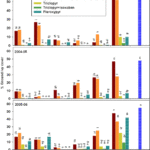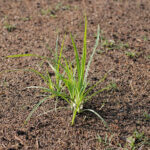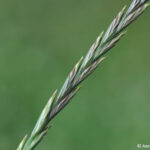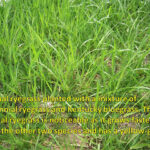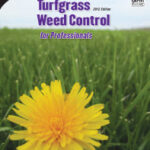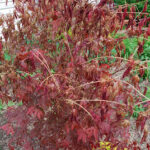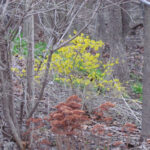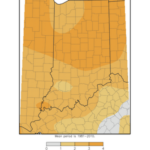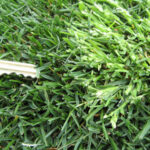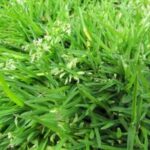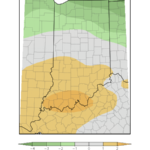Category: Weed Control
2014 Turf Weed Control for Professionals, Now Available
The revised edition of Turfgrass Weed Control for Professionals is now available. The 96 page publication includes content on: Turfgrass Culture Weed Types Weed Life Cycles Developing a Weed Control Program Indicator Weeds Herbicide Information (use, nomenclature, classification, mode of action, movement, resistance, etc.) Control of Tough Weeds Frequently Asked Questions and Answers About […]
How Late is Too Late to Control Broadleaf Weeds?
Many are asking is how late in the year can I apply a broadleaf herbicide to control dandelions, white clover, ground ivy and other broadleaf weeds. Generally, the best answer is that broadleaf herbicides can be applied in Indiana until mid-November and still provide effective control. This timing is +/- 2 weeks depending upon your […]
Yellow Nutsedge: Two New Publications on Controlling this Troublesome Weed
Yellow nutsedge is a troublesome, difficult-to-control turf weed. Understanding this plant’s biology makes it easier to know how to best control it. Two new Purdue publications help answer questions on the best way to control this weed. Yellow Nutsedge Control (AY-19-W) | PDF (for homeowners) Sedge Control for Turf Professionals (AY-338-W) | PDF (turf professionals) […]
Perennial ryegrass seedheads: Now and Later
Perennial ryegrass seedheads are in full production now. These seedheads are tough to cut so make sure to keep your mower blades sharp. Now is a good time to sharpen your mower blades if you haven’t yet this year. Close-up of a perennial ryegrass seedhead. Perennial ryegrass seedhead in a lawn. Perennial ryegrass seedheads don’t […]
Annual Ryegrass Showing Up in Lawns
I have had several emails and weed samples submitted recently of an unknown grass. In each case, the sample was annual ryegrass (Lolium multiflorum). Annual ryegrass is a common ingredient in low quality seed mixtures. It appears in the spring time in lawns seeded the previous year either from some annual ryegrass in the seed […]
When Should I Apply My Preemergence Herbicide for Crabgrass Control?
Despite proper cultural practices, crabgrass may still remain problematic in certain turf areas. The best approach to controlling crabgrass is to use a preemergence herbicide such as dithiopyr (Dimension), pendimethalin (Pendulum), prodiamine (Barricade), prodiamine + quinclorac (Cavalcade PQ), sulfentrazone + prodiamine (Echelon), and others. These herbicides inhibit cell division and prevent crabgrass seeds from properly […]
2013 Turf Weed Control for Professionals, Now Available
The revised edition of Turfgrass Weed Control for Professionals is now available. The 96 page publication includes content on: Turfgrass Culture Weed Types Weed Life Cycles Developing a Weed Control Program Indicator Weeds Herbicide Information (use, nomenclature, classification, mode of action, movement, resistance, etc.) Control of Tough Weeds Frequently Asked Questions and Answers About […]
Read the Label! A Hard Lesson Learned
I was recently forwarded a video from one of our Extension educators in Vanderburgh County, Larry Caplan, that I thought I would share with you. The video chronicles the “misadventures” of a homeowner who simply wanted to control the weeds in his lawn. It should be a reminder to all of us to read the […]
New Weed Control Publication for Turf Professionals
A new publication from the Purdue turf program is now available to professional turf managers. The 88 page publication includes content on: Turfgrass Culture Weed Types Weed Life Cycles Developing a Weed Control Program Indicator Weeds Herbicide Information (use, nomenclature, classification, mode of action, movement, resistance, etc.) Control of Tough Weeds Frequently Asked Questions […]
Should I apply an herbicide right now?
Here are some thoughts on summer weed control in non-irrigated areas during periods of drought: Herbicides are ineffective on drought-stressed weeds and can be damaging to drought-stressed turf, especially when temperatures are warm. My rule-of-thumb is that if the lawn is >50% green, then herbicides can be applied. Avoid the temptation to apply herbicides […]
Grassy Weeds in Turf Planted Last Fall
Many samples have arrived in the Plant and Pest Diagnostic Lab the past few weeks with the common question of “What’s this grass in the turf I seeded last fall?”. Although there could be a host of answer to this question with annual bluegrass likely on the top of the list, most of what I […]
Crabgrass Not Dead After Recent Frosts/Freezes
Despite some recent frosts and freezes across certain spots in Indiana, crabgrass remains unaffected and was not killed. Although crabgrass was not injured, other cold sensitive plants were such as volunteer tomato seedlings in my garden and my Japanese maple. Recent cold air temperatures cooled down our soil temperatures. Temperatures will be mild for […]
Crabgrass is Now Germinating at Most Indiana Locations
The GDD Tracker website (sponsored by the MRTF and Purdue University) is predicting that crabgrass is now germinating at most Indiana Locations (see figure below). The GDD Tracker estimated that crabgrass germinated in Lafayette, IN after Wednesday this week and I was able to confirm this by identifying newly germinated crabgrass (see figure below) both […]
When Will Crabgrass Germinate?
With the rapidly warming weather, several are asking “When will crabgrass germinate?” The reason this is so important is because preemergence herbicides used for the control of crabgrass must be applied prior to emergence (except dithiopyr (Dimension) which can be used postemergence on crabgrass up to 1-tiller). There are several different ways to try and […]
Get your motor running: Crabgrass control adjustment
With warm temperatures this winter many are questioning how to adjust their turf management practices in 2012. In the past 90 days, Indiana temperatures have averaged 3-4 degrees warmer than normal. The forecast also shows that we will likely continue to be warmer than normal during the next 30 days. Although I do not foresee […]
Winter Annual Weeds
Four types of broadleaf weeds exist: 1) perennial (those living more than two years), biennial (those living two years), 3) summer annuals (those germinating in the spring and dying in the fall), and 4) winter annuals (those germinating in the fall and surviving the winter and dying the following spring). Since many of these winter […]
Grass Clippings and Herbicides
I have received a few questions recently regarding the use of grass clippings on lawns treated with herbicides. Here is one of those questions: “Our Master Gardener Association will be working on a project in which they hope to use a great amount of lawn clippings to put down as compost in a large area. […]
Annual bluegrass starting to succumb to summer stress in lawns
Annual bluegrass (Poa annua) is a common weed on golf courses, but is now also becoming a problem on higher mowed turf areas such as lawns and athletic fields. This grass is lighter colored than Kentucky bluegrass and perennial ryegrass and can be identified by its boat-shaped leaf tip and membranous ligule (see Turf Tip […]
Herbicide damage on Spruce and Pine – Update
A few weeks ago we posted information on herbicide damage to spruce and pine (link here). We are continuing to see some new cases of damage, but many with affected trees are simply waiting to see whether or not their trees will recover. For those of you who might have trees with suspected injury to […]
Cooler Than Average Spring Temperatures for Some May Extend the Window for Preemergence Herbicide Applications
Preemergence herbicides prevent emergence of crabgrass plants. These products must be applied prior to crabgrass germination which on an average year could occur as early as April 1 in southern Indiana and three or more weeks later in northern Indiana. It is essential to apply these products early in spring prior to crabgrass germination. Last […]

